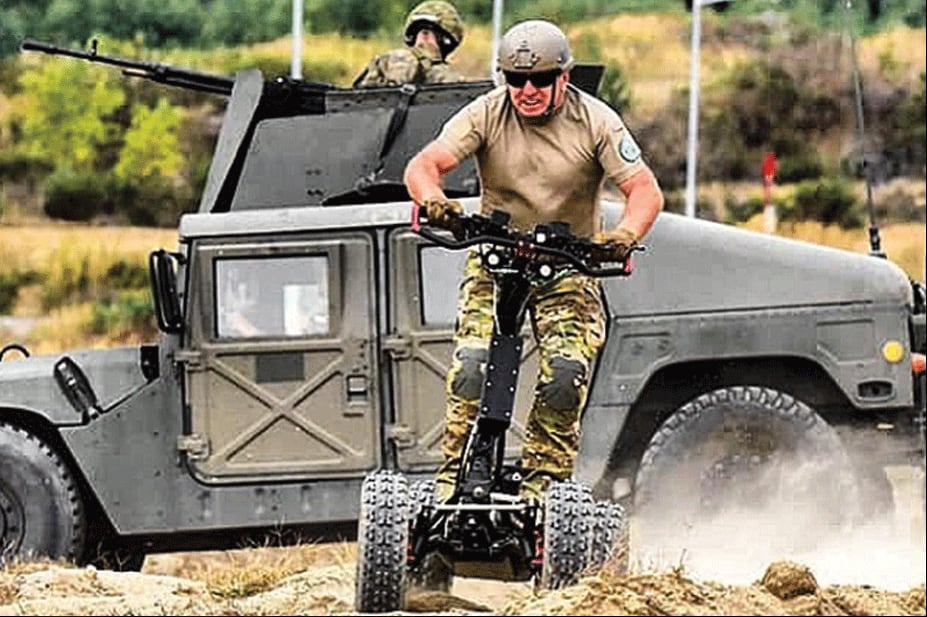Army scout teams may have their own version of a battlefield Tesla to do forward reconnaissance, as more details emerge about what the service wants from a potential electric light reconnaissance vehicle.
The Army posted a “market survey” for such a vehicle in November. While specifics of what they’ll go after are still under review, the broad strokes were shared during the Maneuver Capabilities Development and Integration Directorate’s annual industry days conference out of the Maneuver Center of Excellence at Fort Benning, Georgia, on April 7.
Planners are looking for a vehicle that can seat six scouts, weighs less than 8,000 pounds but can carry a 4,000-pound payload, and sustain a sling load transport and low velocity air drop. The vehicle must be able to mount a MK-19 grenade launcher and M2 .50 caliber machine gun. Some variants may need to run the Common Remotely Operated Weapon System-Javelin, or CROWS-J, according to presenters.
RELATED

They want either an all-electric or hybrid-powered vehicle. It must be able to have on board power to charge equipment.
And it has to be quiet.
“Design must reduce the possibility of being seen or heard when moving or when stationary in overwatch or observation post silent mobility, reduced thermal signature and extended silent watch,” according to presentation slides.
The idea is to reduce noise and thermal signature, increase speed, reliability, duration and reduce liquid fuel requirements and all of the logistical add-ons that come with liquid fuel.
Official details from the Army Requirements Oversight Council are expected by April 16, according to the presentation.
A larger program that could affect nearly all ground vehicles in the Army is the Tactical and Combat Vehicle Electrification program, or TaCV-E. That program is also under development and on schedule for approval this summer, according to the presentation slides.
Mike Smith, with the light systems branch of the Maneuver Requirements Division, said in the presentation that the program is designed to allow developers to incorporate electrification advancements into both existing and future vehicle systems all in a drive to “drive liquid fuel reduction.”
“Electrification will allow the Army to extend duration and reduce the logistical burden that units face while executing our doctrine — Cross-Domain Maneuver in support of MultiDomain Operations,” Smith said.
The reduced logistical burden is expected to help commanders better control operational tempo, he said.
The plan starts with light vehicles. In the near term, that is anything up to 2.5 tons, Smith said.
As batteries, materials and charging improves, the medium vehicle fleet, 2.5 to 10 tons are next then on to the heavy vehicle fleet of 10 tons or more.
The idea is likely built on starting with hybrid technologies over the light and medium fleet, with hopes that improvements in battery and other technologies will allow for all-electric in the future.
Todd South has written about crime, courts, government and the military for multiple publications since 2004 and was named a 2014 Pulitzer finalist for a co-written project on witness intimidation. Todd is a Marine veteran of the Iraq War.





